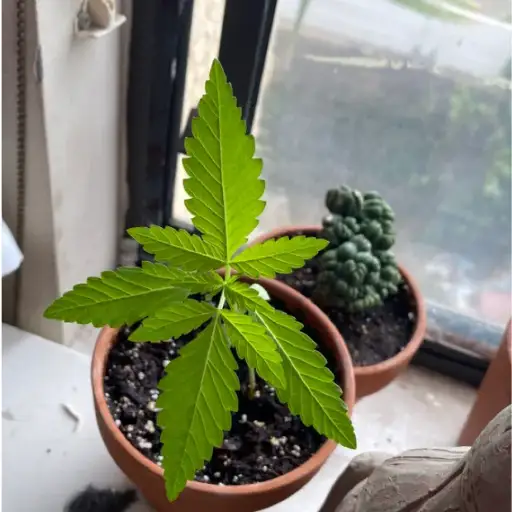Epsom salt is a versatile and beneficial mineral that has been proven to boost the health and growth of cannabis. Known for its ability to improve nutrient uptake and alleviate deficiencies, Epsom salt is instrumental in promoting lush foliage thereby increasing flower production. In this article, we will explore the different ways how to effectively use Epsom salt in your cannabis cultivation routine, including methods of application, appropriate timings, as well as specific benefits it provides at various growth stages. Regardless of whether one is an expert farmer or a beginner at growing cannabis, integrating this organic mineral into the system can result in better yields and, hence, healthier plants.
What is Epsom Salt, and How Can It Benefit Cannabis Plants?
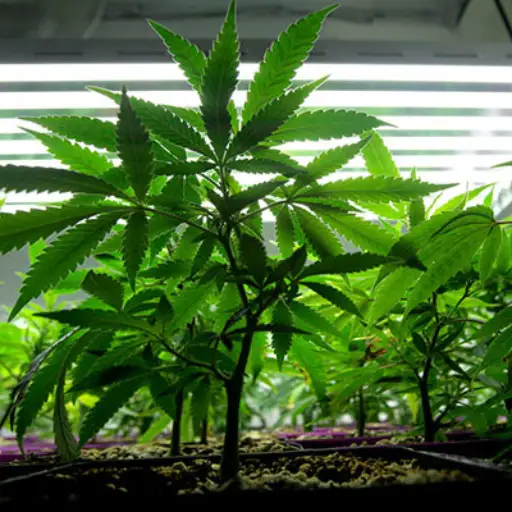
What is Epsom Salt?
Magnesium sulfate, the primary component of Epsom salt, is a naturally occurring mineral. It is most often used in gardening and agriculture because it dissolves easily in water, which helps plants absorb it quickly. One of the key components of Epsom salt is magnesium, which helps with photosynthesis and enzyme function, while sulfate aids in absorbing essential nutrients. Therefore, by supplying these vital elements, Epsom salt can help promote healthier, greener marijuana plants, leading to better growth and increased yield.
How Does Magnesium in Epsom Salt Help Cannabis Plants?
Magnesium plays an indispensable part in the overall health of cannabis plants as it affects several physiological processes that are necessary for plant growth. Here are some reasons why magnesium derived from Epsom salt benefits cannabis:
- Promotion of Photosynthesis: Chlorophyll, a molecule that traps sunlight for photosynthesis, contains magnesium at its center; thus, having enough of this element increases energy production, promoting a faster growth rate.
- Nutrient Uptake: It allows the movement of nitrogen and phosphorous, among other essential minerals, around the plant body. Appropriate levels will ensure that plants take up efficiently and distribute crucial nutrients required for flowering/fruiting stages.
- Enzyme Activation: Magnesium is a co-factor for many enzymes to do their work correctly, increasing biochemical processes associated with plant metabolism that ultimately determine its productivity (growth).
- Treating Symptoms: It shows signs like leaf yellowing or chlorosis, especially on aged leaves, and poor flower formation when there isn’t enough Mg supply. Regular use can prevent such challenges, making your greens more robust.
Technical Parameters:
- Optimal Magnesium Concentration During Vegetative Stage: The recommended magnesium level for cannabis plants during the vegetative stage varies from 0.5-1.0 mEq/L.
- Application Frequency: Apply every four to six weeks, especially during the flowering phase of growth, when magnesium demand is high.
By ensuring that your cannabis cultivation practice includes Epsom salt, you will have an effective means to mitigate Mg deficiency, which in turn leads to robust plant health and maximum yield potential.
What Role Does Sulphur Play in Cannabis Growth?
For cannabis plants to be healthy, they need to have sulfur, which assists in producing amino acids and proteins. From my experience, it helps in chlorophyll synthesis, enabling plants to utilize adequate sunlight during photosynthesis. In addition, as a secondary macronutrient, sulfur accelerates enzyme activity and supports all metabolic processes within the marijuana garden. Insufficient sulfur causes stunted growth with yellow leaves; thus, this has been said to affect returns obtained from such crops drastically. Maintaining appropriate levels of sulfur throughout different development stages calls for fertilization balance.
How to Apply Epsom Salt to Your Cannabis Plants?
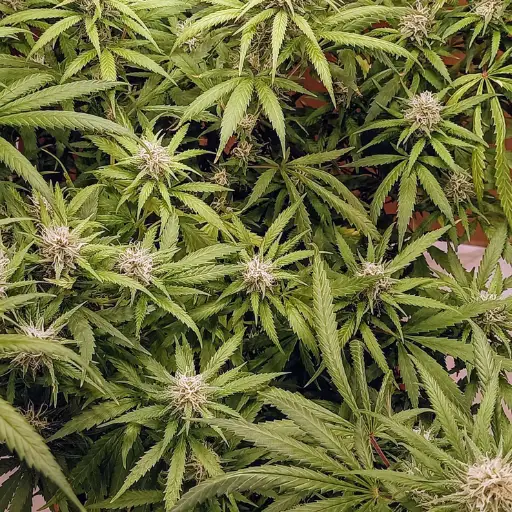
How Much Epsom Salt Should I Use for Cannabis Plants?
While considering the amount of Epsom salt to use on cannabis plants, I usually go with approximately one tablespoon per gallon of water for a foliar spray or around one to two teaspoons directly into the soil. Be sure not to overuse this, as it might be counterproductive. This is why after every 4-6 weeks, I apply Epsom salt, especially during vegetative and flowering stages when magnesium demand soars up. Knowing that you’re supposed to monitor my plants for deficiency signs and make dosage adjustments to keep them healthy.
Is It Better To Add Epsom Salts In Soil Or As Foliar Spray?
In my opinion, both methods have their advantages depending on what I want from my cannabis plants. When I add it to the soil, Epsom salt acts as a source of magnesium and sulfur, which are released slowly, ensuring nutrient availability consistently. On the other hand, using it as a foliar spray allows for faster uptake especially if deficiencies are noticed or the plants are stressed out. A combination of these two methods is what I would typically use: adding small amounts of Epsom salt to the soil, just enough for basic plant requirements, while spraying directly on leaves when necessary during these growth phases, such as yellowing leaves. Thus, I ensure the prompt provision of much-needed Mg2+ by applying appropriate quantities of this nutrient at each stage, enhancing germination rates.
When is the Best Time to Apply Epsom Salts?
Through my research and practice, the early vegetation phase and flowering stage can be considered as certain growth stages where cannabis benefits most from application epsomsalts.com reports referred me to; the first month helps in establishing a solid foundation, and then buds start appearing so more magnesium is needed by plants at this period: This means that whenever there is any sign that indicates an insufficiency in magnesium like yellowish leaves, the most effective way of solving this problem is by applying Epsom salt as a foliar spray at that moment.
Regarding technical details, I usually follow the guidelines above concerning sprays and soil applications. Post-application monitoring of plants enables adjustment in response. Different sources recommend consistency to avoid any imbalances in nutrients since such salts should be used throughout the feeding program instead of on isolated occasions; therefore, it is better if they are administered according to plant growth needs (Malhi et al., 2012). My timing matters most because magnesium and sulfur requirements for cannabis are known to be at their highest during these specific times when essential growth occurs.
What Are the Signs of Magnesium Deficiency in Cannabis Plants?
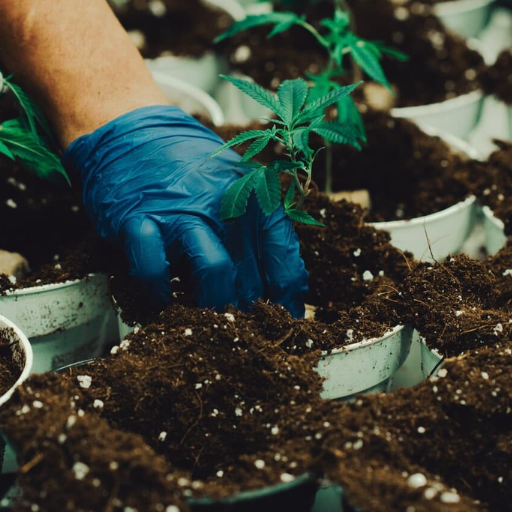
Magnesium Deficiency in Cannabis Plants: How to Spot and Treat It
One of the first signs is yellowing leaves, typically in older growth. This may include characteristic interveinal chlorosis or spaces between veins turning yellow while leaving the veins themselves green. Another symptom is curled or clawed tips. In the worst scenarios, rust spots or necrosis may appear. These symptoms should be closely watched; it will help me address magnesium deficiency on time and keep my plants healthy and thriving.
Causes of Magnesium Deficiency in Cannabis Plants
My experience growing cannabis has shown that Mg deficiency can occur due to several reasons. The most common one is an imbalanced nutrient solution whereby excess calcium or potassium interferes with its absorption, leading to deficiency symptoms. In addition, pH levels of the soil or nutrient solution are crucial as pH levels that are too high or low can hinder magnesium absorption. Environmental stressors such as excessive temperature and poor root health also contribute to magnesium deficiency. Thus, identifying these potential problems beforehand helps me to establish the best-growing conditions to foster my cannabis plant’s healthy development.
Can Epsom Salt Help With Magnesium Deficiency?
Indeed, Epsom salt (magnesium sulfate) is effective for rectifying this problem in marijuana plants. When I detect signs of magnesium inadequacy, I dissolve approximately one tablespoonful into a gallon of water and use it as soil drenching or foliar spray. The main technical parameters that I consider are:
- Dosage: About one tablespoon per gallon of water is ideal for treating deficiency without overwhelming the plants.
- pH Level: I ensure that my nutrient solution pH ranges from 6.0 to 7.0 since it enhances Mg availability.
- Application Frequency: depending on severity, every 2-4 weeks seems right.
These parameters will enable me to employ Epsom salt effectively to replenish Mg levels and keep my cannabis plants healthy.
How to Use Epsom Salt During Different Growth Stages of Cannabis?
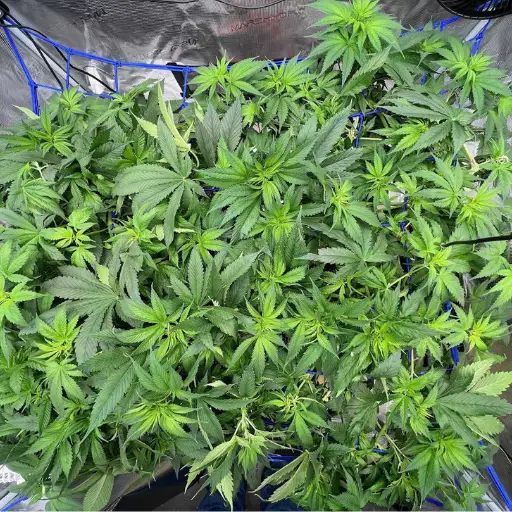
Use of Epsom Salt When Germinating
During germination, using Epsom salt is a good source of magnesium, which is essential for healthy seedling development. I make a diluted Epsom salt solution by dissolving about half a teaspoon in a quart of water for a practical application. Just before sowing seeds, this soft application can be used to moisten the growing media. Magnesium helps enhance nutrient uptake, thus promoting better root growth and encouraging seedlings to thrive. Besides that, I also keep the right amount of moisture not to kill germs but to provide them with comfortable conditions without excessive water that may lead to damping off.
Application of Epsom Salt During the Vegetative Stage
Epsom salt is applied during the vegetative stage to support the vigorous growth and overall health of my cannabis plants. It is commonly mixed with one gallon of water and sprayed on the leaves or soaked in soil every 2-3 weeks after adding a tablespoonful of Epsom salts. Chlorophyll production in plants maximizes when there is enough magnesium from Epsom salts, which in turn enhances photosynthesis, leading to greener foliage. Depending on different deficiencies, such as yellow leaves, my frequency changes to ensure an optimum nutrient supply for perfect gains throughout this crucial period.
Using Epsom Salt for the Flowering Stage
Many benefits are associated with using epsom salt during the flowering stage, such as enhancing bud formation and improving plant health. To implement this, I usually blend between one and two tablespoons per gallon-sized container and use it as a soil drench every three or four weeks. The timing is an essential factor because chlorophyll can only form if there is enough magnesium, hence assisting photosynthesis intensification, thereby making sunlight a more energy-efficient way for conversion by my vegetation during its peak phase of growth. Moreover, keeping my nutrient solution within a pH range of 6 -6.5 ensures optimal nutrient uptake. When I notice the symptoms of a magnesium deficiency, such as interveinal chlorosis on plant leaves, I can adjust the feeding schedule to produce significant and healthy flowers necessary for a higher yield.
What Are the Benefits of Using Epsom Salt for Cannabis Growth?

Magnesium and Sulphur on Cannabis Health
Cannabis plants need magnesium and sulfur as two critical elements for maintaining their overall health and productivity. Based on the top sources of information I have come across in my research, magnesium plays a role in photosynthesis by helping form chlorophyll, allowing plants to produce energy. This nutrient prevents yellow leaves and stunted growth, ensuring that foliage develops robustly. On the other hand, sulfur helps synthesize amino acids and proteins essential for plant metabolism and development.
In technical terms, I usually maintain the levels of magnesium around 50-70 ppm (parts per million), while sulfur reaches 20-30 ppm when there is a nutrient solution to achieve the required results. According to research reports presented by these findings, high amounts of this mineral enhance the uptake of nutrients and growth while having enough sulfur supports the production of vital compounds, hence more healthy cannabis crops. Therefore, I can adjust the feeding program and address deficiencies that will eventually lead to an improved crop life by carefully monitoring such elements.
How Does Epsom Salt Enhance Photosynthesis?
Primarily composed of magnesium sulfate, Epsom salt is invaluable in increasing photosynthesis among cannabis plants. Upon applying it, Epsom salt releases available magnesium, thus promoting the formation of chlorophyll, which is critical in capturing sunlight for energy synthesis through photosynthesis. Ensuring my plants have sufficient magnesium from Epsom salt can increase their energy production efficiency, thereby developing better during my cycle. In addition, sulfates further facilitate several metabolic processes that support the plant’s effective use of sunlight. As a result, more thriving ones come with branched foliage with greater density, leading to higher yields.
Effect of Epsom Salt on Bud Development
From my experience using it throughout growing periods, it may be concluded that Epsom salts significantly influence bud development due to their magnesium and sulfur content. Magnesium is essential during the latter stages of flowering as it helps boost the production of essential oils while also improving the general quality of the buds. According to my findings from various sources, maintaining magnesium at about 50-70 ppm and 20-30 ppm for sulfur in my nutrient solution will ensure optimum bud formation. Studies indicate that the correct amounts allow efficient photosynthesis during this period, hence bigger and heavier buds.
Also, sulfur is needed to synthesize amino acids and proteins required in bud maturation. By keeping them within these ranges, one can significantly enhance terpenoid profiles that ultimately improve the fragrance and potency of a bud. In particular, I can ensure that my plants develop strong, high-quality buds by maximizing my overall yield and production quality by monitoring these parameters or factors.
Reference sources
Frequently Asked Questions (FAQs)

Q: What are the benefits of using Epsom salt for marijuana plants?
A: Epsom salt is an excellent addition to marijuana plants’ nutrient regimen. It provides essential magnesium and sulfur, aiding chlorophyll production and overall plant health, leading to more vigorous growth and enhanced flavor.
Q: How do I apply Epsom salt to my cannabis plants?
A: You can apply Epsom salt directly to the soil or dissolve it in water for foliar spraying. For soil application, use one teaspoon per liter of water. Mix one teaspoon of Epsom salt in a spray bottle with water for foliar spray and apply to the leaves.
Q: Can I use Epsom salt on cannabis plants during all growth stages?
A: Yes, Epsom salt can be used throughout the growth stages of cannabis plants, from seedlings to mature plants. However, it’s especially beneficial during the flowering stage when magnesium is also needed in higher amounts.
Q: How often should I use Epsom salt on my cannabis plants?
A: For optimal results, use Epsom salt every two weeks. This helps ensure the best quality plants by providing them with the essential nutrients they need to grow healthy and robust.
Q: What is the recommended dosage of Epsom salt for marijuana plants?
A: The general recommendation is to use one teaspoon of Epsom salt per liter of water. Adjustments can be made based on the plant’s specific needs and the type of water you are using, such as the spring water of Epsom.
Q: Is Epsom salt safe to use on mother plants?
A: Yes, Epsom salt is also safe and beneficial for mother plants. It helps maintain their health and vigor, ensuring they can produce quality clones.
Q: Can I combine Epsom salt with other nutrients?
A: Epsom salt can be combined with other nutrients to ensure your cannabis plants get all the necessary nutrients. It works well with other fertilizers and supplements, enhancing the overall nutrient profile.
Q: What are some signs that my marijuana plants need Epsom salt?
A: Yellowing leaves with green veins (magnesium deficiency) and slow growth are common signs that your marijuana plants might benefit from Epsom salt. Regular usage can prevent these issues.
Q: Why is magnesium essential for cannabis plants?
A: Magnesium is crucial for cannabis plants as it plays a key role in photosynthesis and the formation of chlorophyll. Without adequate magnesium, plants can’t efficiently produce the energy they need to grow.
Q: Is Epsom salt the same as commonly used bath salts?
A: Epsom salt, often used in bath salts, is a natural magnesium and sulfate mineral compound. While it is commonly associated with bath salts, its benefits extend to gardening, including the cultivation of cannabis plants.



